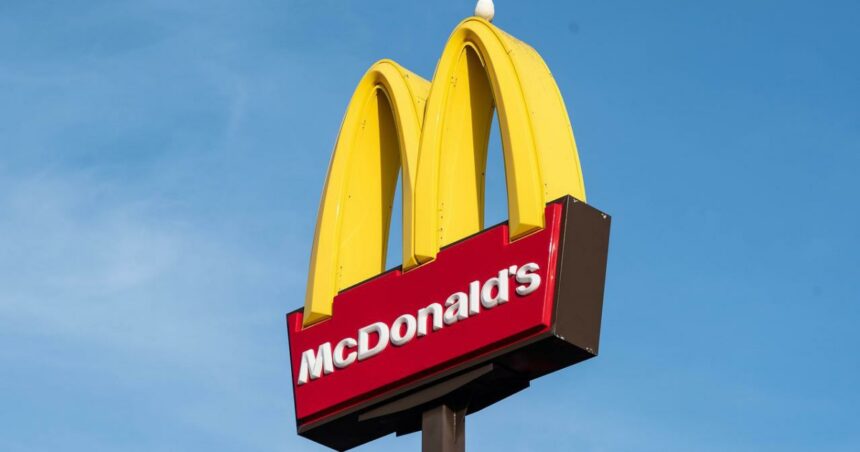New Year has just begun but McDonald’s Sales Performance seems to have been heavily influenced for the first quarter of 2025, with the fast-food giant marketing its biggest McDonald’s decline found in 2020. U.S. same-store sales have gone down by 3.6% on average during the last period, and this fueled anxiety from analysts and investors alike regarding the company’s course in the future.
For the second time, this holds for McDonald’s sales performance in the U.S., which now reflects a wider economic problem with changing consumer habits. While these are negatives for the business, McDonald’s stock was still able to gain some ground from a minor earnings beat and encouraging results from its loyalty initiative. With consumer confidence skittish, however, big questions will ask whether or not McDonald’s revenue does ever recover.
Read More: Starbucks Stock Crashes: Embattled CEO Brian Niccol Brutal Earnings Miss Fallout
U.S. Same-Store Sales Decline Raises Red Flags
The 3.6% U.S. same-store sales decline marks the deepest decline since the pandemic-induced 2020 apocalypse. McDonald’s sales performance in its core American market has suffered from harsh winter weather and a consumer base increasingly reluctant to spend. The company now has pressure put upon it to turn itself around after two quarters of negative growth. Adjusted EPS used to be $2.67, which was slightly ahead of analyst expectations, but the McDonald’s revenu came in below expectations at $5.96 billion versus an anticipated $6.09 billion.
The gap in expectations suggests a slowdown in guest traffic and greater volatility in discretionary spending. McDonald’s stock was punished with a decline of over 2% in premarket trading. After disappointment with McDonald’s earnings, pressure is growing for establishing stability in the company’s core business.
Global Outlook: Mixed Trends Beyond U.S. Borders
McDonald’s sales performance on the global front was also disappointing, as it recorded a 1 percent decline in worldwide same-store sales, contrary to expectations of a modest increase. In parent markets like France and Australia, McDonald’s revenue decreased by 1 percent, while in contrast, developmental license markets like Japan, China, and Brazil provided a bit of solace with a 3.5 percent increase in U.S. same-store sales.
Such regional profitability, however, could not help McDonald’s at the macro level. Investors in McDonald’s stock are now focusing on whether these gains can now be sustained and expanded. Most analysts argue that improving performance in international markets is essential to reversing the adverse sales performance trends of McDonald’s in light of a possibly sluggish recovery in the U.S. market.
Loyalty Program Shines as a Strategic Advantage
The loyalty scheme was a bright spot in McDonald’s sales performance. In more than sixty markets, members of the loyalty program contributed almost $8 billion in systemwide sales during the quarter, and a trailing twelve-month number of $31 billion. This means a lot in terms of customer engagement tools that help drive McDonald’s revenue while compensating for the other weaknesses.
In an environment where traditional promotional methods are often less effective, loyalty programs provide one avenue to bringing back guest traffic and boosting McDonald’s earnings. Many analysts now think this program could be at the core of pulling McDonald’s sales performance upward again in the future and stabilizing the McDonald’s stock until the uncertainty period ends.
CEO’s Response and Strategic Moves to Regain Momentum
McDonald’s is facing disappointing numbers, but according to its CEO Chris Kempczinski, the economic headwinds notwithstanding, the brand must rely on its core strengths. “Today’s consumer is grappling with uncertainty, and it could be understood in terms of new promotional offers-to that comforting familiarity-that evokes fond memories of great value, mouth-watering tastes,” he stated despite admitting differences in performance on regional markets.
To combat declining U.S. same-store sales, McDonald’s is planning to ramp up marketing on value deals and bring back popular items like snack wraps. These two steps would attract budget-conscious consumers and stimulate growth of McDonald’s sales performance in quarters to come.
The fast-food giant will also establish 2,200 new store outlets globally this year. With this expansion slated to add 2 percent of total system wide McDonald’s revenue, it reflects the confidence going forward in its growth model on a global scale. Although there are possible short-term concerns, such investment shows neither fear nor lack of trust in the durability of McDonald’s stock and its brand recovery capability.
A Tough Quarter but Strategic Path Forward
Nothing denies that Q1 2025 has tested the strength and ability of McDonald’s sales performance in the best way. With its largest U.S. same-store sales decline in almost five years, along with a revenue miss, the fast-food giant has now come to a crossroads. Its huge, loyal customer base, innovation in the value menu, and long-term growth initiatives offer hope, however. Beating McDonald’s earnings and McDonald’s revenue in the near future will actually depend on how effectively the company is going to adapt to changing consumer trends while maintaining value leadership in a crowded market.
In general, the company will need to continue generating foot traffic and international expansion, as well as leverage the loyalty platform, to set the direction for stocks moving forward for McDonald’s stock. For now, though, the focus is just on recovery and resilience in a rapidly changing economy.
For More Trending Business News, Follow Us 10xtimes News






